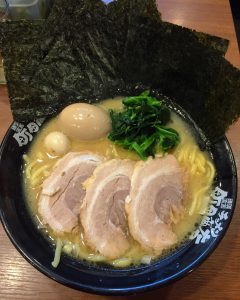Yes, all types of meat can be used for ramen soup.
In Japan, pork is a popular meat. The pork eaten in Japan is also of very high quality. The Japanese do only want to eat meat from happy animals. The pigs, which are, produced exclusively for the Japanese market meets those criteria.
In Europe, many people prefer to eat chicken or beef. You can use that as well in a ramen soup.
On the Noodle Soup course for beginners, you will learn how to make Japanese foundation from scratch. You will also learn how to prepare and prepare different ingredients so that they can be used in Japanese noodle soup.
You can read more about the course Noodle Soup for Beginners
_
Zoë has held sushi courses and cooking classes for A. P. Moller – Maersk, Hugo Boss Nordic, Novo Nordisk, Novartis, Velux, Gorrissen Federspiel, Beierholm revision, Elbek & Vejrup and many more.











